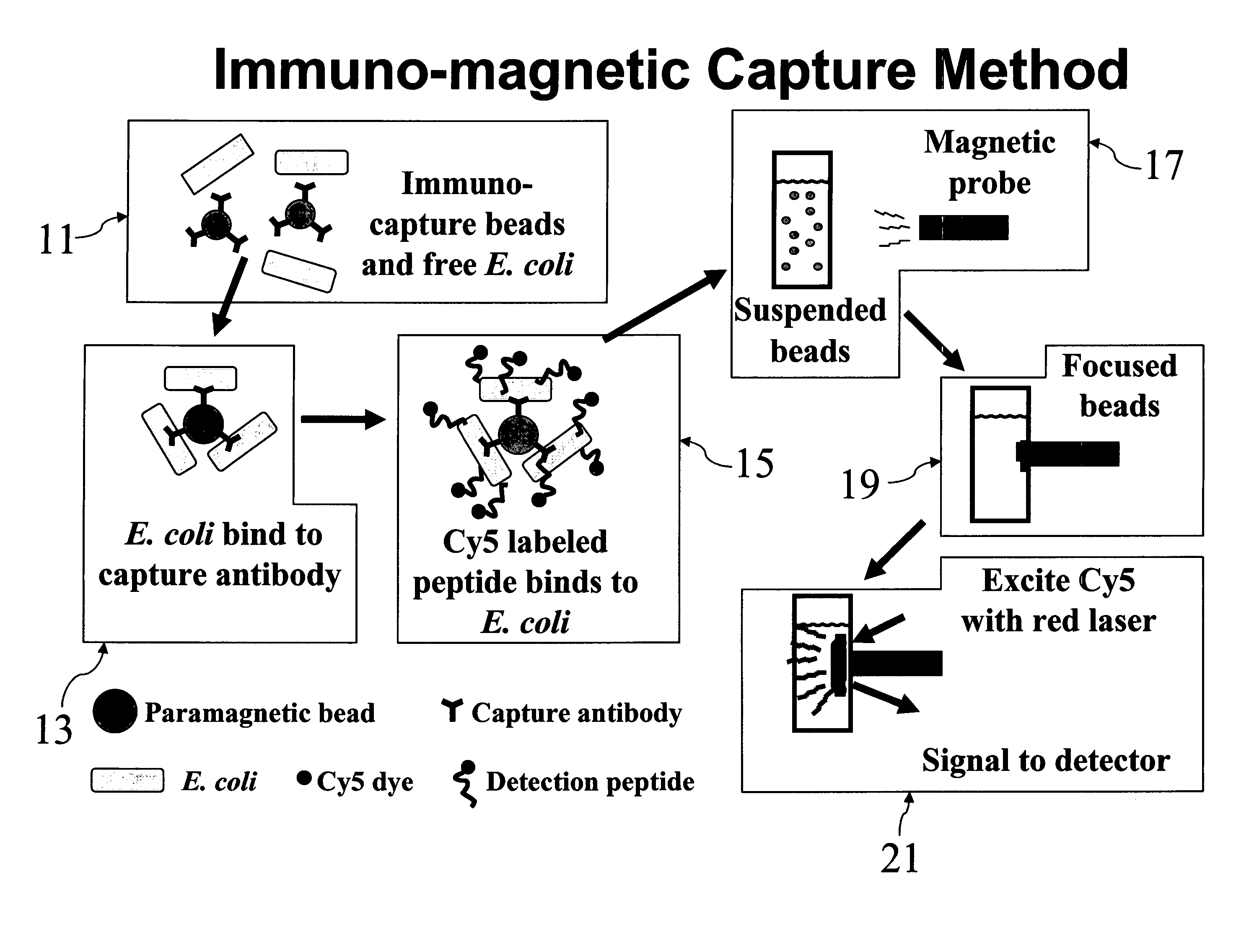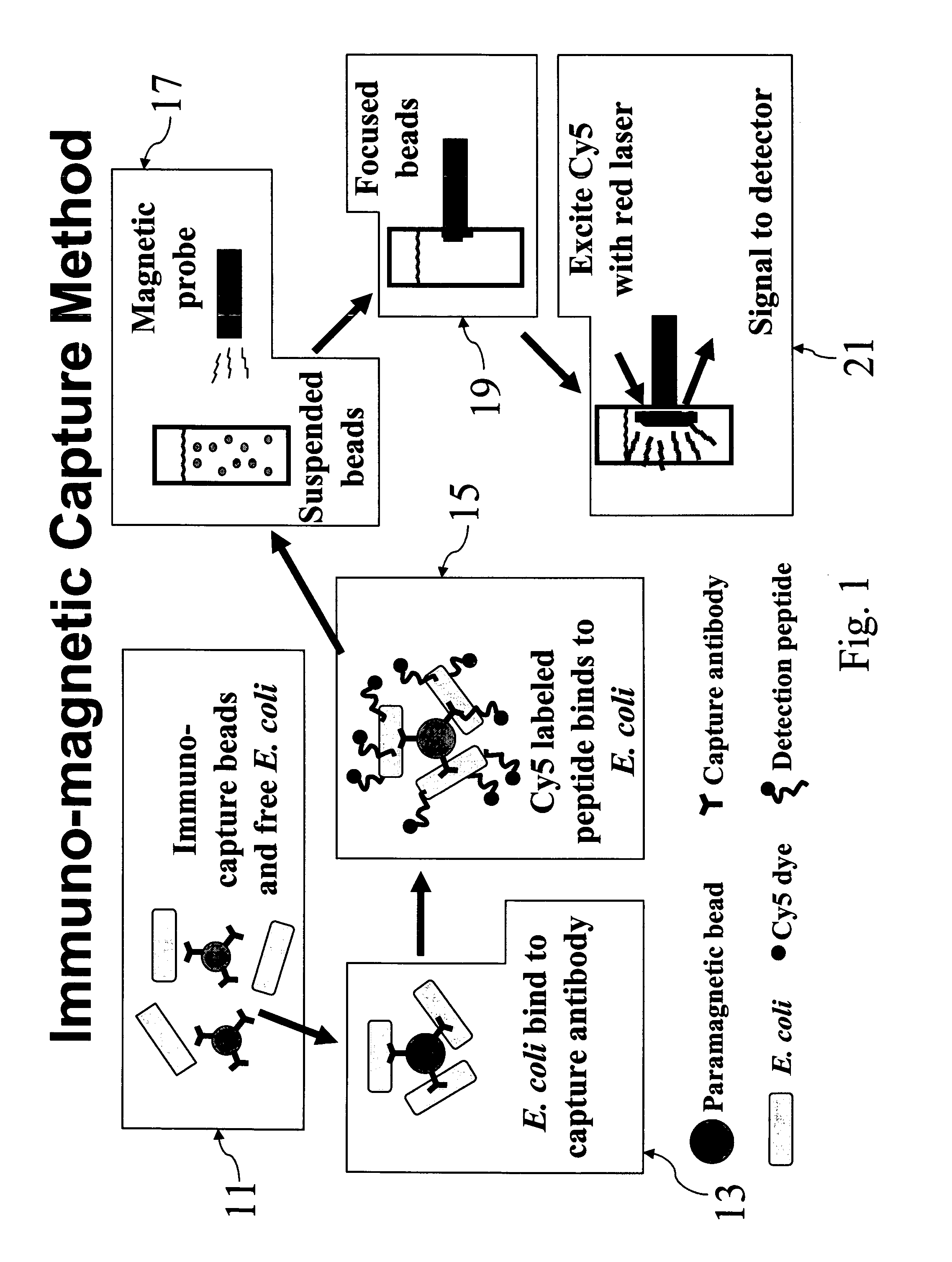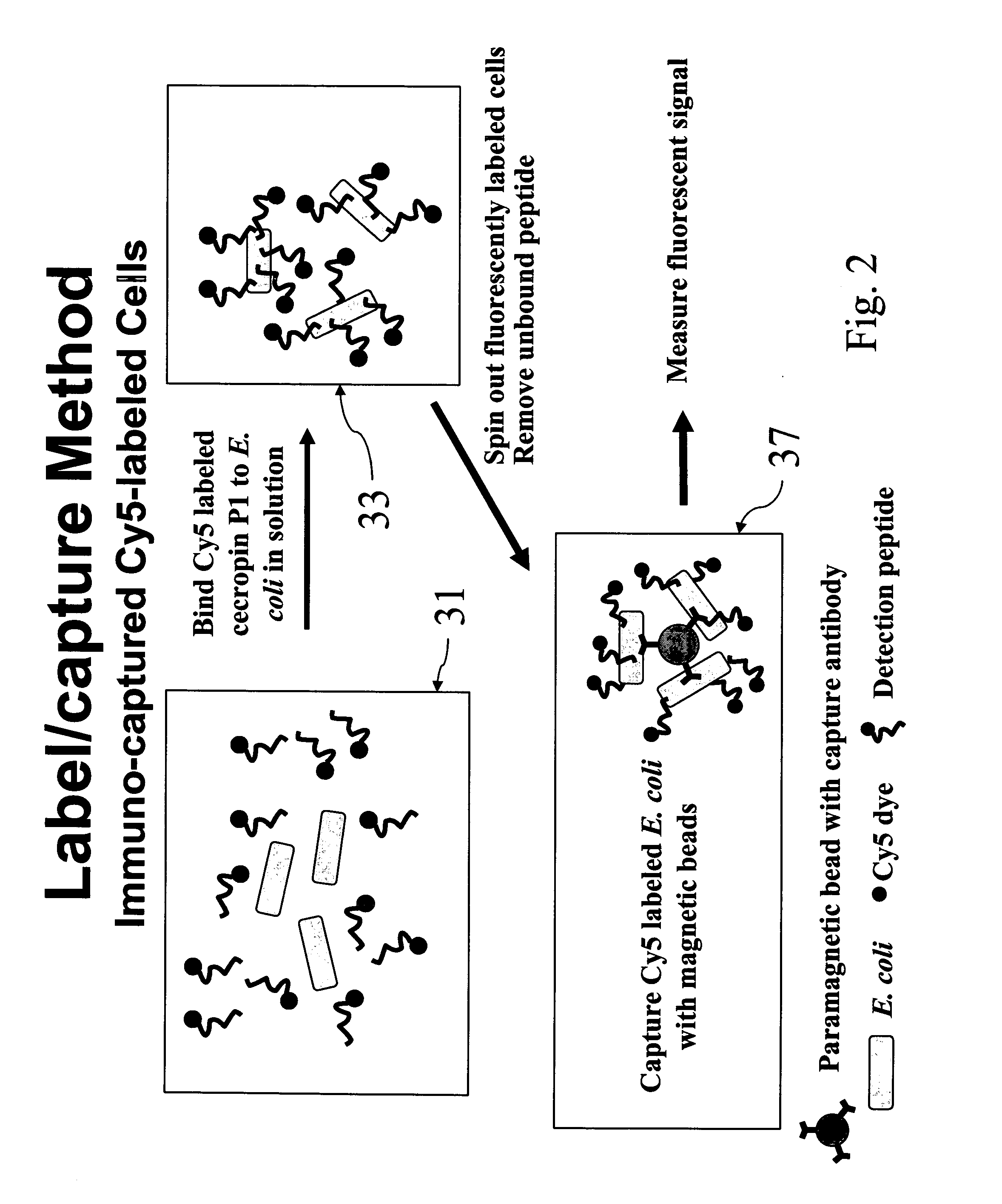Labeled antimicrobial peptides and method of using the same to detect microorganisms of interest
- Summary
- Abstract
- Description
- Claims
- Application Information
AI Technical Summary
Problems solved by technology
Method used
Image
Examples
example i
Preparation of Cy5-Labeled Antimicrobial Peptides
[0043] The antimicrobial peptides cecropin P1 (see Lee et al., “Antibacterial peptides from pig intestine: isolation of a mammalian cecropin,”Proc. Natl. Acad. Sci. U.S.A., 86:9159-62 (1989), which is incorporated herein by reference), PGQ (see Moore et al., “Antimicrobial peptides in the stomach of Xenopus laevis,” J. Biol. Chem., 266:19851-7 (1991), which is incorporated herein by reference), ceratotoxin A (see Marchini et al., “Purification and primary structure of ceratotoxin A and B, two antibacterial peptides from the female reproductive accessory glands of the medfly Ceratitis capitata (Insecta:Diptera),”Insect Biochem. Mol. Biol., 23:591-8 (1993), which is incorporated herein by reference), cecropin A (see Sun et al., “Peptide sequence of an antibiotic cecropin from the vector mosquito, Aedes albopictus,” Biochem. Biophys. Res. Commun., 249:410-5 (1998), which is incorporated herein by reference), CPF3 (see Maloy and Kari, “S...
example ii
Solution Binding Assay
[0047]E. coli O157:H7 (ATCC 43888) was grown in Luria broth to OD600 1 (approximately 108 CFU / ml) and washed 2× in equal volume PBST before being resuspended in PBST. 100 μl (107 CFU) cells were added to 900 μl PBST with 5 μg Cy5-CP1_c peptide for 30 minutes at ambient temperature, with rotary mixing (see reference numeral 41 of FIG. 4). Cells were harvested at 10,000×g for 3 minutes (see reference numeral 43 of FIG. 4), the supernatant removed with pipette tip, and washed three times with 1 ml PBST and spun as above (see reference numeral 45 of FIG. 4). Cells were then resuspended in 200 μl PBST and transferred to a black microplate (Nalge Nunc International, Rochester, N.Y.)(see reference numeral 47 of FIG. 4). 900 μl solution containing 5 μg peptide was added to 100 μl buffer without cells and assayed as a negative control. The microplate was imaged using the Storm 860 (Amersham Biosciences, Piscataway, N.J.) using red fluorescence at 1000 V PMT, 200 micron...
example iii
Immuno-Capture of Peptide Labeled Cells
[0049]E. coli O157:H7 cells were labeled with Cy5CP1_c in solution as described above. After removal of unbound excess peptide, 1 ml labeled cells was added to 20 μl anti-E. Coli O157:H7 Dyna-beads paramagnetic beads (Dynal Biotech, Browndeer, Wis.) and incubated 30 minutes by rotary mixing. Beads were collected after 2 minutes using a magnetic particle concentrator and washed three times with 1 ml PBST (0.05%). Samples were analyzed on Storm 860 and analyzed by TotaLab software to measure fluorescent signal.
[0050] Referring now to FIG. 6, it can be seen that, by following the above procedure, bacteria in concentrations as low as 103 CFU / ml, the lowest non-zero concentration tested, were capable of being detected.
PUM
 Login to View More
Login to View More Abstract
Description
Claims
Application Information
 Login to View More
Login to View More - R&D
- Intellectual Property
- Life Sciences
- Materials
- Tech Scout
- Unparalleled Data Quality
- Higher Quality Content
- 60% Fewer Hallucinations
Browse by: Latest US Patents, China's latest patents, Technical Efficacy Thesaurus, Application Domain, Technology Topic, Popular Technical Reports.
© 2025 PatSnap. All rights reserved.Legal|Privacy policy|Modern Slavery Act Transparency Statement|Sitemap|About US| Contact US: help@patsnap.com



